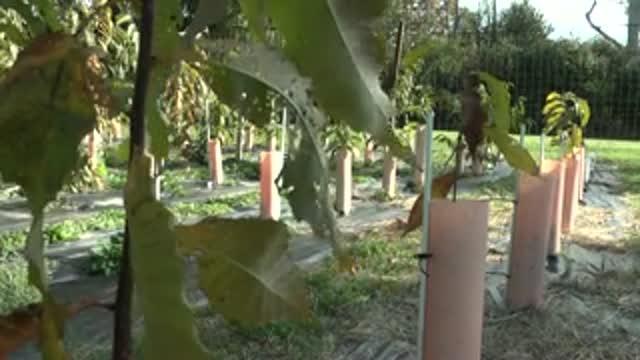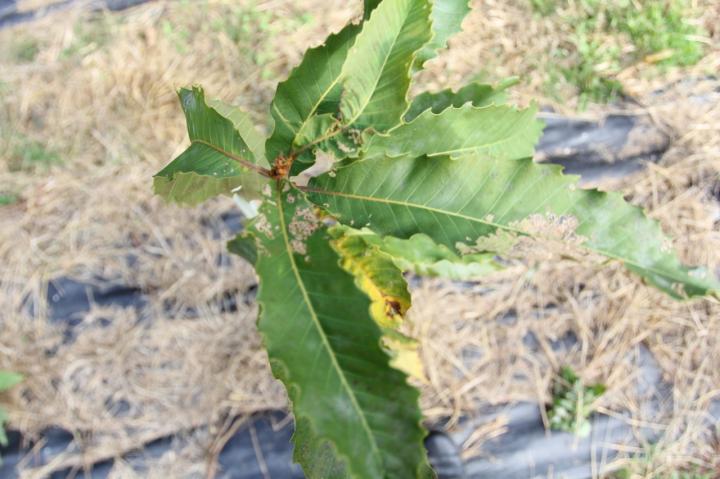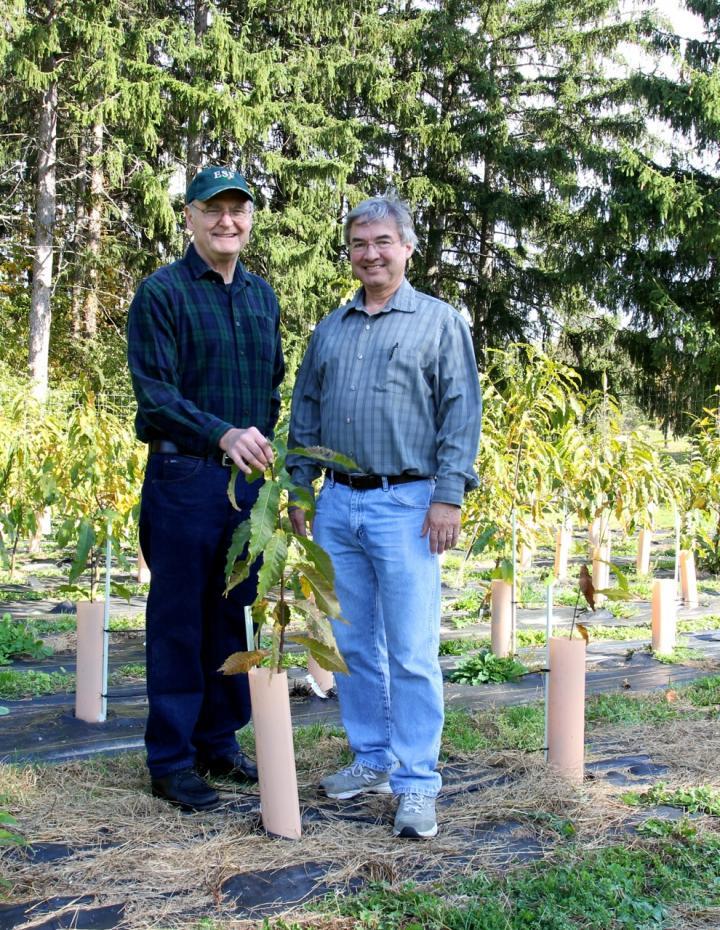"The team has accomplished a major goal, the generation of a blight-resistant American chestnut tree," said Dr. Timothy Tschaplinski, a scientist at Oak Ridge National Laboratory who does chemical analysis for the research team to determine if the tissue of transgenic trees differs from that of wild-type trees. "The results of the metabolite analyses indicate that the nuts produced from transgenic plants aren't appreciably different from those produced by wild-type plants and should be safe for consumption. The sum total of these efforts is a major step forward for the goal of restoration of American chestnut to the North American landscape."
Continuing research by ESF and collaborators from other institutions indicates that the transgenic trees do not affect the composition of leaf litter, the feeding habits of insects or the growth of ecologically important fungi.
"We're doing all these tests to be sure there are no ill effects because we are the first to develop a transgenic tree for an environmental restoration program," Powell said.
Powell said the fact that the gene used to enhance blight resistance is obtained from wheat should allay concerns about the genetic engineering that went into producing the new lines of trees. "We eat it all the time," he said. "If you had a bagel for breakfast, you ate it today. And this gene is gluten-free."
He said that in trees produced in the laboratory, only two genes — the wheat gene and a common selectable marker gene — did not originally occur in the American chestnut (which has about 40,000 genes). A selectable marker gene is one introduced to an organism to help researchers be sure the resistance-enhancing gene is present.
Many hybrid chestnuts made by crossing different chestnut species, such as the "Dunstan" chestnut and others commonly on the market today, mix tens of thousands of genes. Even backcross breeding results in trees that have approximately one-sixteenth Chinese genes, or some 2,500 genes introduced by humans. "Our transgenic American chestnuts are much, much closer to the original trees that were in our forests, and we got there by adding only a couple genes," Powell said.

Scientists at the SUNY College of Environmental Science and Forestry (ESF) are growing the first American chestnut trees that can withstand the blight that virtually eliminated the once-dominant tree from the eastern United States.
(Photo Credit: SUNY-ESF)
The most recent study, published this week in the journal "Plant Science," shows that when American chestnuts acquire blight resistance in the laboratory, they pass it on to the next generation, so trees planted in the wild would have blight-resistant offspring. The two previous publications show that the level of blight resistance in an individual tree is linked to the presence of the resistance gene from wheat and that laboratory tests performed on leaves predict the level of blight resistance that is seen in field tests.
Powell and Maynard said the process shows the value of biotechnology in dealing with invasive species, such as the pathogenic fungus that arrived in New York City more than 100 years ago and virtually wiped out what was once the most abundant forest tree in the eastern United States.
"It's possible to enhance disease resistance in plants with genetic engineering. This is a powerful tool that can be added to all the other tools available to improve forest health. This technique can be used for many species of trees that are threatened by disease. It goes beyond the American chestnut," Powell said.
Initiating the approval process marks the latest step in a process that began about 25 years ago with the two professors' partnership.
Powell and his team were responsible for finding and testing genes that would protect the tree. His background research on the blight fungus led the way to the successful use of a wheat oxalate oxidase gene. This gene doesn't hurt the fungus, but instead detoxifies the acid used by the fungus to attack the tree, essentially changing the fungus from a pathogen to a saprophyte that lives on the bark of the tree without causing significant harm.
Meanwhile, Maynard and his team were developing a process to insert genes into embryo tissue of American chestnut and regenerate them into whole plants. Maynard estimated that in the first five years alone, they extracted at least 10,000 embryos from nuts. The majority of these embryos died or just grew callus, but a handful survived for the next steps of the research process. Since 2006, about 2,000 transgenic American chestnut trees have been planted in field trials.

A young American chestnut tree grows in a SUNY-ESF plot. ESF researchers are growing blight-resistant American chestnut trees.
(Photo Credit: SUNY-ESF)

Dr. Charles Maynard, left, and Dr. William Powell of the SUNY College of Environmental Science and Forestry stand in a plot with young American chestnut trees. The researchers are growing blight-resistant American chestnuts.
(Photo Credit: SUNY-ESF)